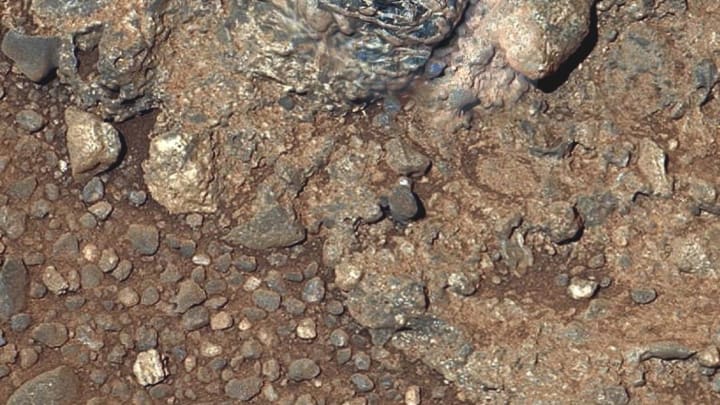A recent study published in Nature Geoscience details the presence of a potential “continental crust” on Mars.
An international team of scientists looked over geochemical data and images of 22 fragments transmitted to Earth by the $2.5 billion NASA rover Curiosity from data gathered by its laser chemical-analysis equipment, known as ChemCam. They say they were able to verify a close geologic similarity between those lighter rocks and the granitic continental crust that started forming here on Earth 4.4 billion years ago.
Typically, igneous rock on Mars has been darker and denser, more closely resembling oceanic crust on the Earth. But the Gale crater, where the Curiosity rover landed in 2012, contains fragments of four-billion-year-old igneous rocks that are distinctly light in color.
“Along the rover’s path, we have seen some beautiful rocks with large, bright crystals, quite unexpected on Mars," says Los Alamos National Laboratory's Roger Wiens, lead scientist on the ChemCam instrument and a co-author of the study. “As a general rule, light-colored crystals are lower in density, and these are abundant in igneous rocks that make up Earth’s continents.”
Scientists have long suspected the red planet once had moving tectonic plates, just as Earth does. At some point, however, these seemingly became inert. Here on Earth, the great landmasses continue to shift. Every year, North America and Eurasia wander about one inch further apart, while an Asia/Australia merger looms on the (far) distant horizon. Throughout this process, continental crust floats around over oceanic crust because it's less dense. Perhaps early Mars and early Earth went through similar growing pains.
But intriguing as this new find may be, it doesn't prove that Mars once had plate tectonics. Perhaps, suggest the authors, these igneous rocks were distorted by the young planet’s lithosphere (the uppermost layer of a terrestrial planet which, on Earth, includes the crusts). During Mars’ early days, the specimens might’ve been dragged a little closer to its core. On their downward journey, they could have partially melted—and maybe even adopted those unusual colors.
